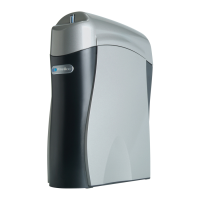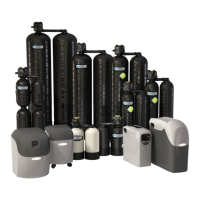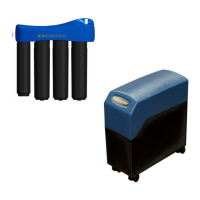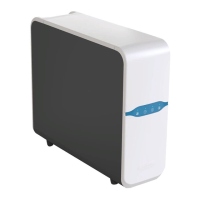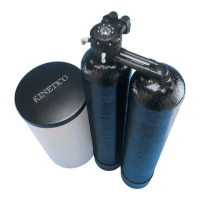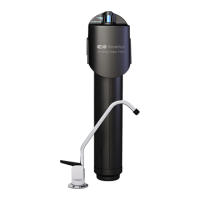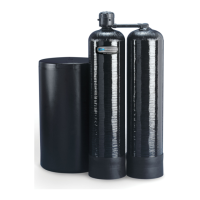Technical sheet
3.7. TROUBLESHOOTING
PROBLEM
1. The pump does not work, no water is produced
A. There is no power supply.
B. The transformer is damaged.
C. Some filter has reached the end of its useful life.
D. There is a leak in the equipment.
E. The equipment has been producing water for 6 hours.
F. Low inlet water pressure.
G. The low pressure switch is defective and does not
send the signal to the controller.
H. The high pressure switch is defective and does not
reset.
I. The pump is damaged
2. The pump does not stop
A. The pump is damaged.
B. The high pressure switch is damaged.
3. The pump starts and stops continuously
A. Low inlet pressure.
B. Defective low pressure switch.
C. Defective high pressure switch.
D. There is some leak in the equipment.
4. Insufficient production flow
A. Faucet valve stuck or interlocked.
B. Clogged sediment / carbon prefilters or carbon pos-
tfilter.
C. Low inlet pressure.
D. Clogged reverse osmosis membrane.
POSSIBLE SOLUTIONS
A. Turn on the power or wait for the supply to return.
B. Replace the transformer.
C. Replace the filter.
D. Locate the leak and fix it.
E. Disconnect the power supply and reconnect.
F. Install a pressure group so that the low pressure
switch can be activated.
G. Repair or replace the low pressure switch.
H. Repair or replace the high pressure switch.
I. Replace the pump.
A. Replace the pump
B. Repair or replace the high pressure switch.
A. Increase inlet pressure.
B. Repair or replace the low pressure switch.
C. Repair or replace the high pressure switch.
D. Locate and fix the leak. Dry the leak sensor well.
A. Open or unclog the tap valve.
B. Replace clogged filters.
C. Increase inlet pressure.
D. Ensure that the inlet pressure is between the requi-
red values. Ensure that the rejection line of the machine
is free of obstructions. Unclog the duct and replace the
membrane if necessary.

